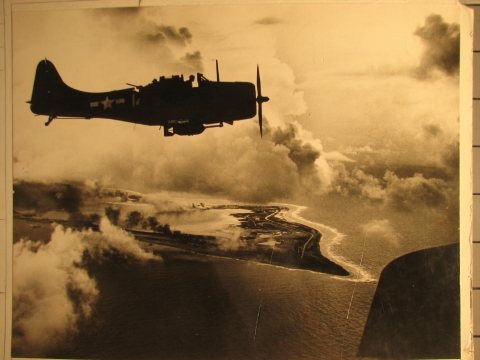About Us
Wake Atoll National Wildlife Refuge is located 2,138 nautical miles west of Honolulu. Wake is the northernmost atoll in the Marshall Islands geological ridge and perhaps the oldest and northernmost living atoll in the world. Today the islands of Wake Atoll remain an active U.S. Air Force Installation, while the refuge includes 495,515 acres of submerged lands and waters surrounding the atoll out to 200 nautical miles from the mean low water line of the islands. Despite its small land and reef areas, the atoll provides important seabird and migratory shorebird habitat, as well as vibrant coral reefs that support large populations of fishes.
Composed of a reef-enclosed lagoon, the atoll consists of three coral islands (Peale, Wake and Wilkes), built upon an underwater volcano. The atoll's central lagoon is the volcano crater; the islands are part of the rim. Wake Island, the main or center section of the "wishbone", is much the largest of the three islands. "V"-shaped and pointed towards the southeast, Wake Island comprises the outer perimeter of the eastern half of the atoll. Peale and Wilkes Islands continue the open ends of the prongs of the "wishbone" on the north and south respectively. The northwestern side of the atoll is open, except for the coral reef, which surrounds the atoll and completes the lagoon's enclosure.
Wake was formally claimed by the United States during the Spanish American War, when it was possessed for use as a cable station. In 1935, Pan American Airways established a seaplane refueling base and 48-room hotel on Peale Island, becoming the atoll’s first permanent residents.
On December 11, 1941, the U.S. Marine garrison and 1,200 civilians completing construction of a major air and submarine base on Wake were attacked by the Japanese, the only amphibious landing attempt to be repulsed by shore-based guns during World War II in the Pacific. In a second attack on December 23, Wake’s survivors were overwhelmed by Japanese soldiers, who maintained control over the atoll until September 1945. At least two Japanese destroyers, two transport landing craft, and multiple aircraft were lost in the vicinity of Wake Island during the December 1941 assault.
Wake Atoll was designated as a National Historic Landmark National Historic Landmark
National Historic Landmark is a nationally significant historic place designated by the Secretary of the Interior because it possesses exceptional value in illustrating or interpreting the heritage of the United States. More than 2,600 places bear this designation, 10 of them on U.S. Fish and Wildlife Service lands.
Learn more about National Historic Landmark in 1985 in recognition of its role in World War II. Numerous artifacts from the war remain, perhaps the most famous being the “98 Rock,” a memorial for the 98 U.S. civilian contract POWs who were forced by their Japanese captors to rebuild the airstrip as slave labor, then blindfolded and killed by machine gun on October 5, 1943. An unidentified prisoner escaped, and chiseled "98 US PW 5-10-43" on a large coral rock near their mass grave. The prisoner was recaptured and beheaded by the Japanese admiral, who was later convicted and executed for war crimes
Our Mission
The mission of the National Wildlife Refuge System is to administer a national network of lands and waters for the conservation, management and, where appropriate, restoration of the fish, wildlife and plant resources and their habitats within the United States for the benefit of present and future generations of Americans.
Our History
- December 11, 1941 - The U.S. Marine garrison and 1,200 civilians completing construction of a major air and submarine base on Wake are attacked by the Japanese, the only amphibious landing attempt to be repulsed by shore-based guns during World War II in the Pacific.
- 1985 – Wake Atoll is designated a National Historic Landmark National Historic Landmark
National Historic Landmark is a nationally significant historic place designated by the Secretary of the Interior because it possesses exceptional value in illustrating or interpreting the heritage of the United States. More than 2,600 places bear this designation, 10 of them on U.S. Fish and Wildlife Service lands.
Learn more about National Historic Landmark for its role in World War II. - January 6, 2009 - The Pacific Remote Islands Marine National Monument is established, which expanded the protected boundaries of Wake Atoll out to 50 miles.
- September 25, 2014 – The Pacific Remote Islands Marine National Monument is expanded. The protection around Wake Atoll now extends out to 200 nautical miles.
Other Facilities in this Complex
While Wake Atoll National Wildlife Refuge is not a complex, it does fall within the Pacific Remote Islands Marine National Monument that incorporates mor than 490,000 square miles within its boundaries, which extend 50 nautical miles from the mean low water lines of Howland and Baker Islands, Kingman Reef, and Palmyra Atoll, and Jarvis Island, and Johnston and Wake Atoll.




